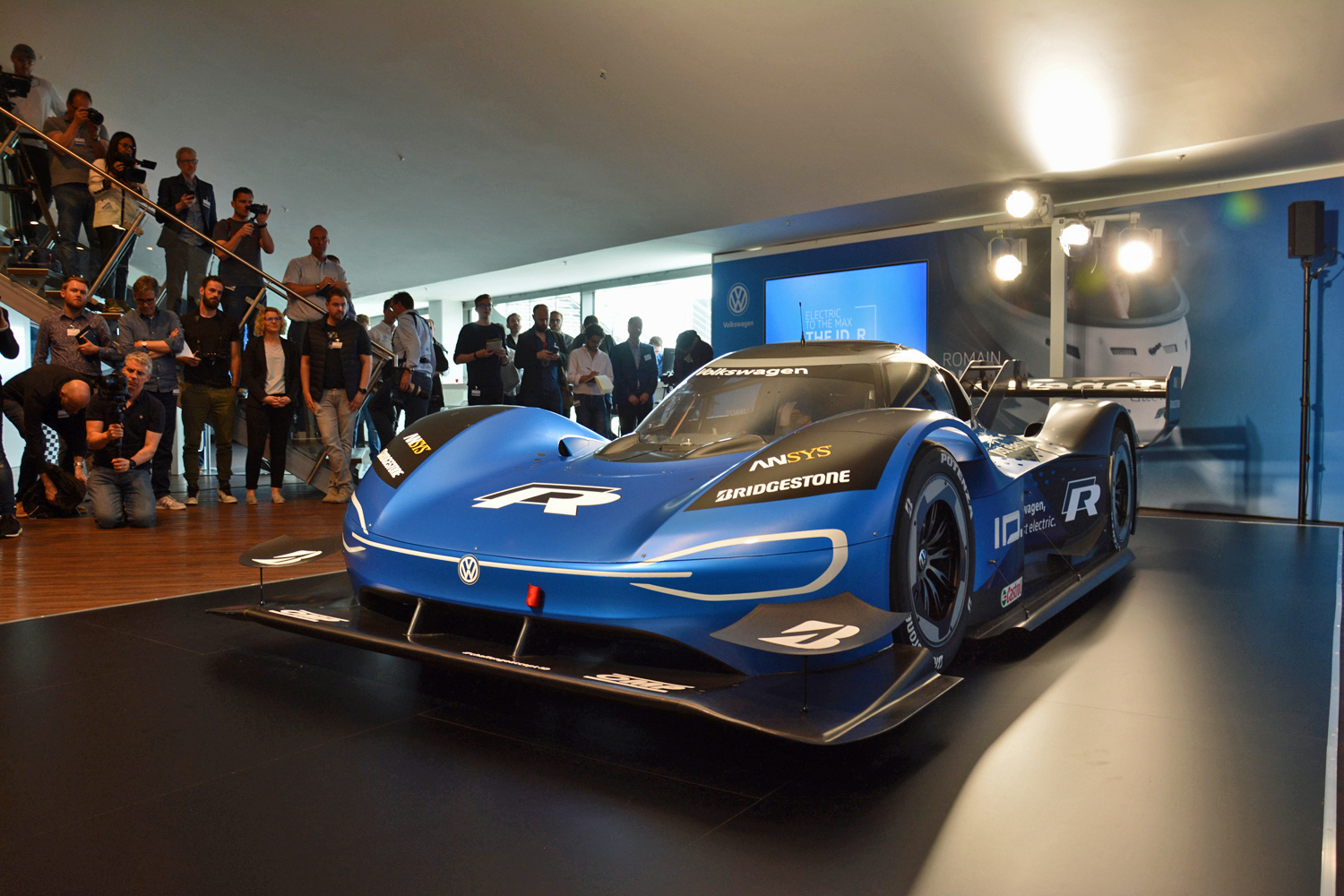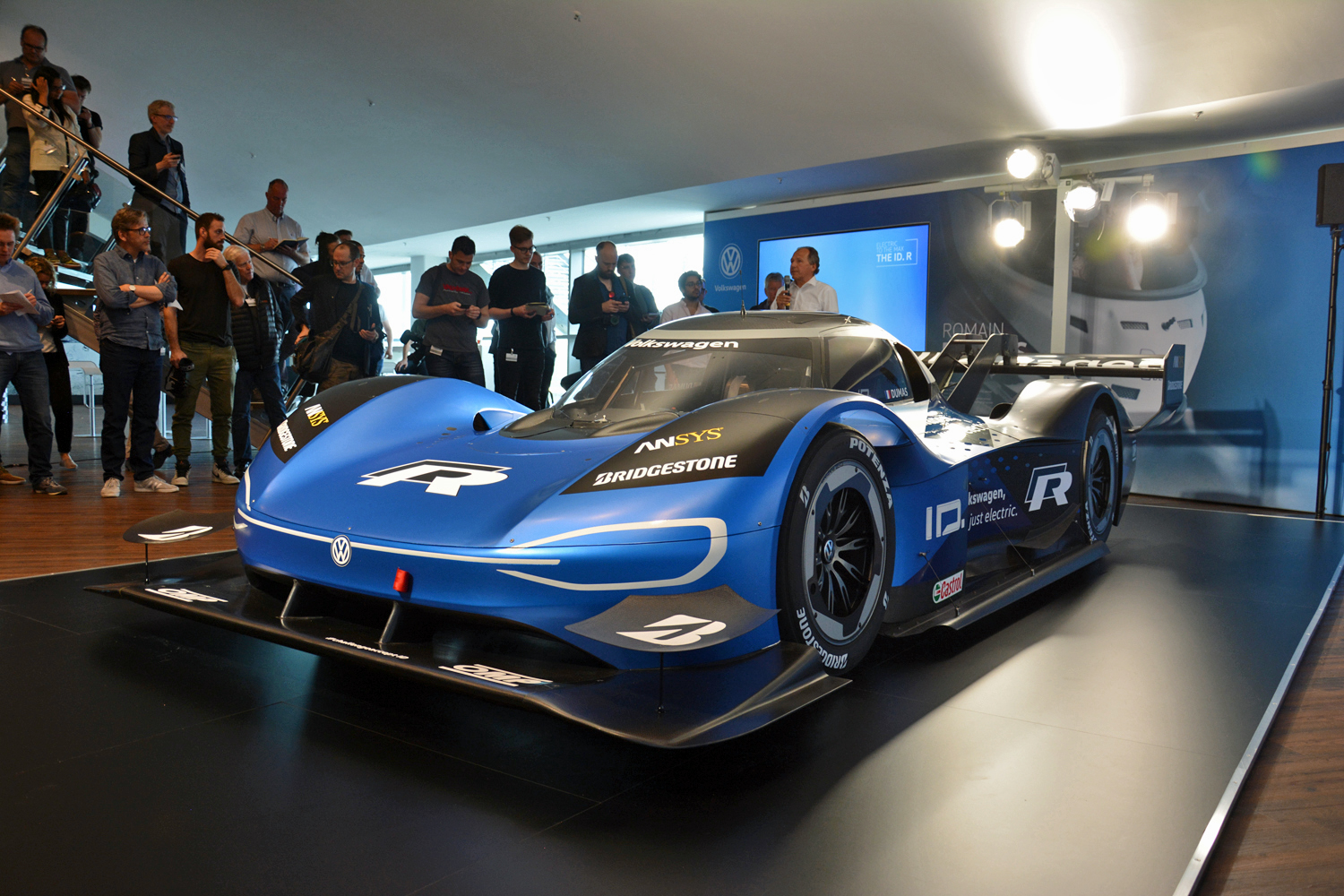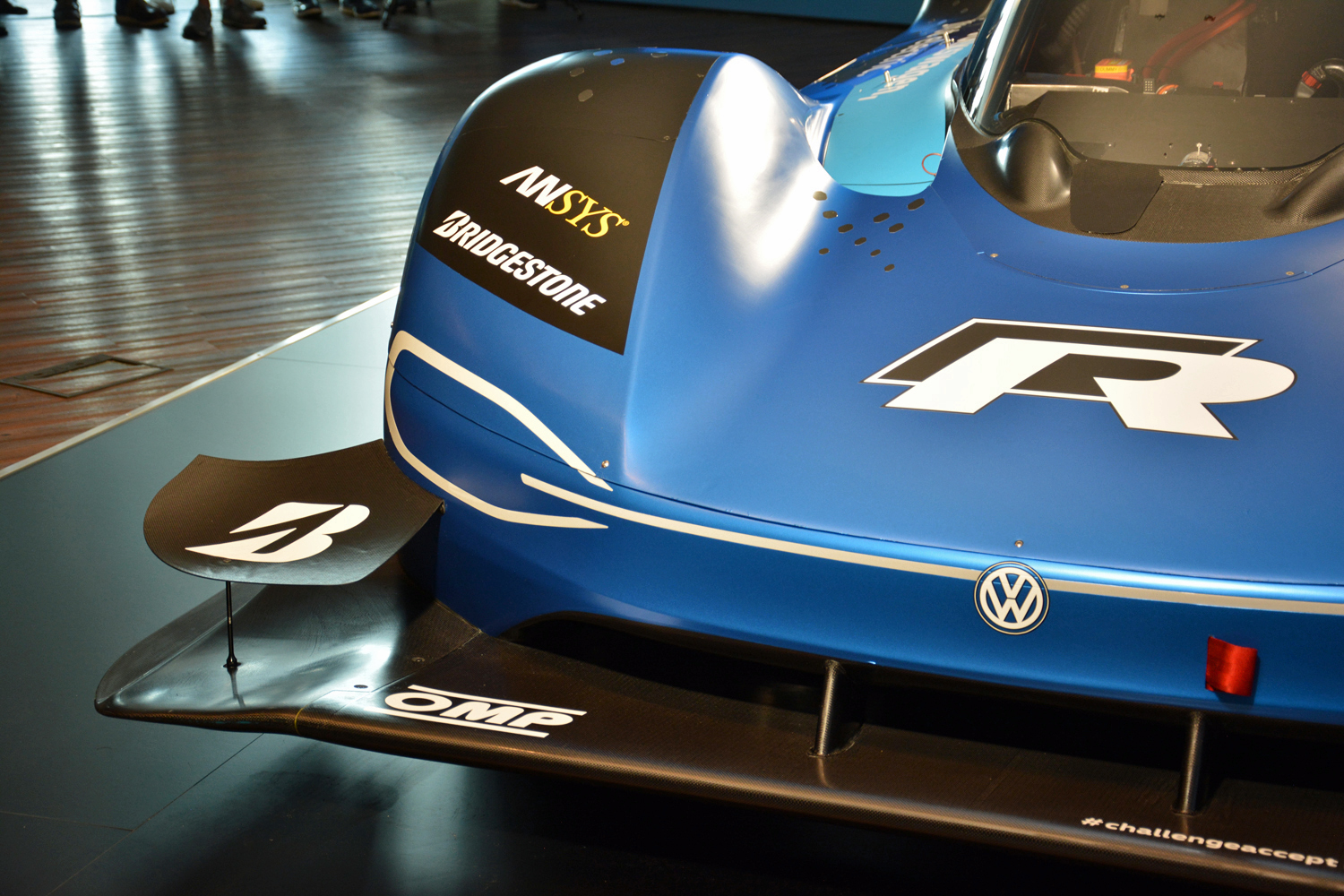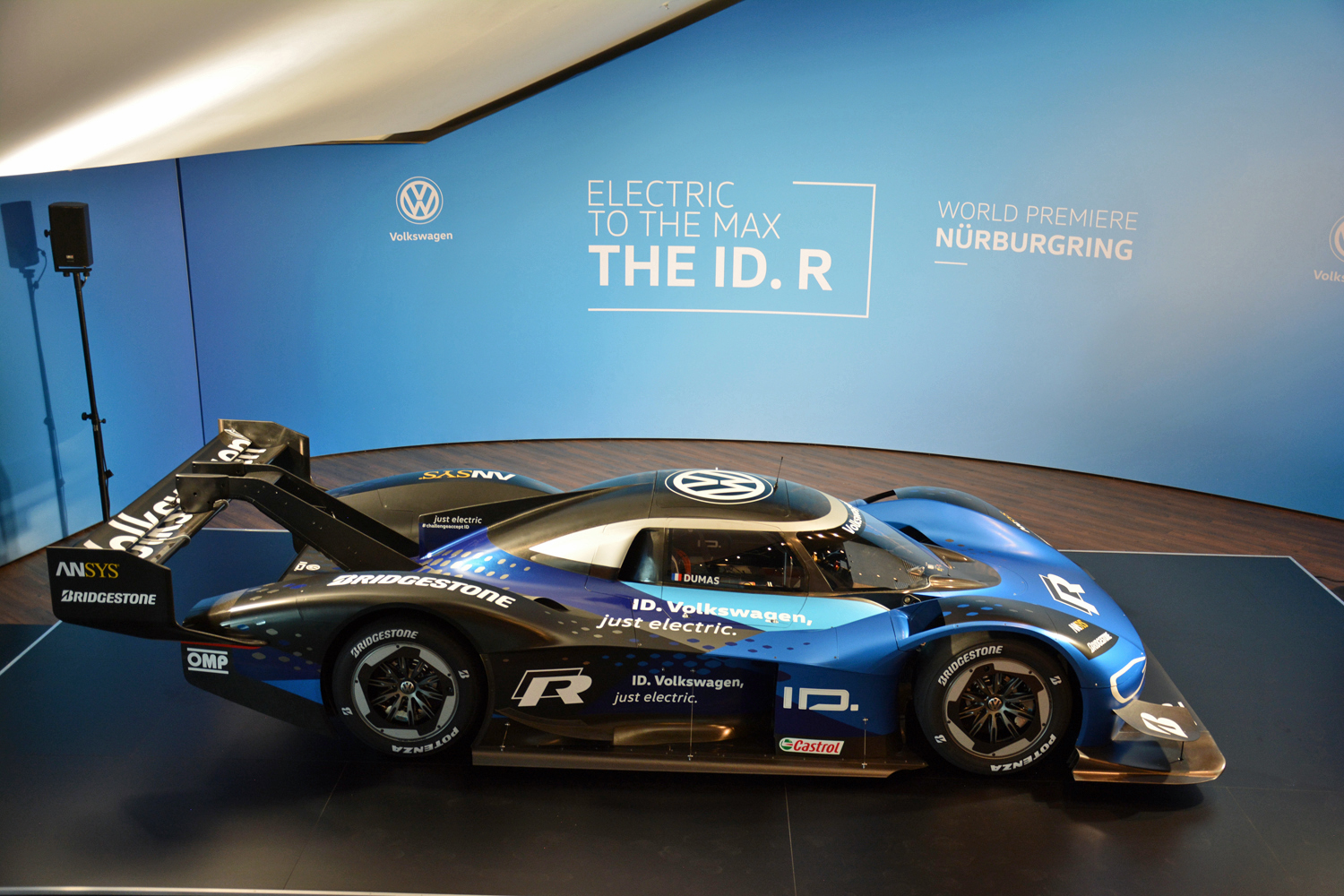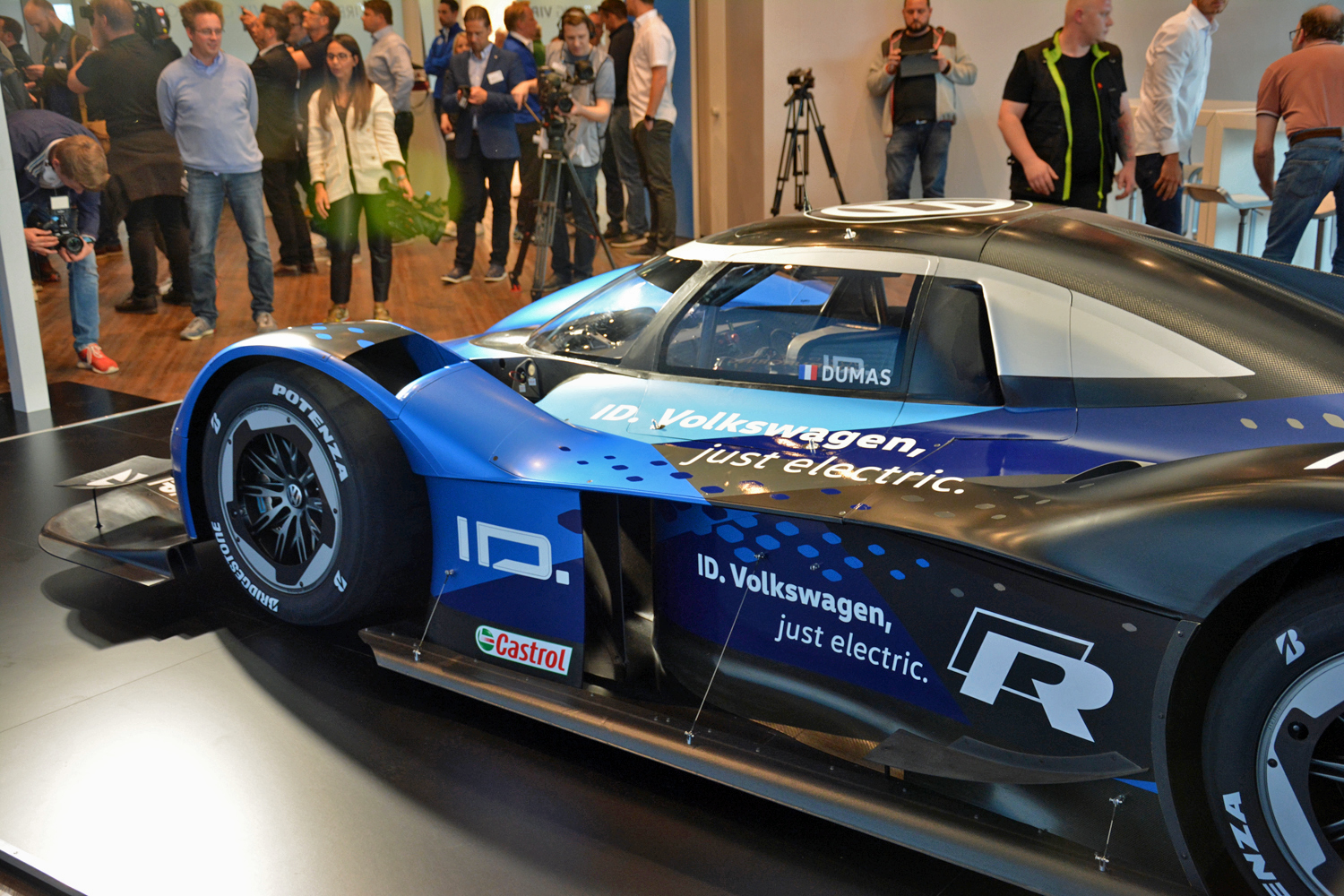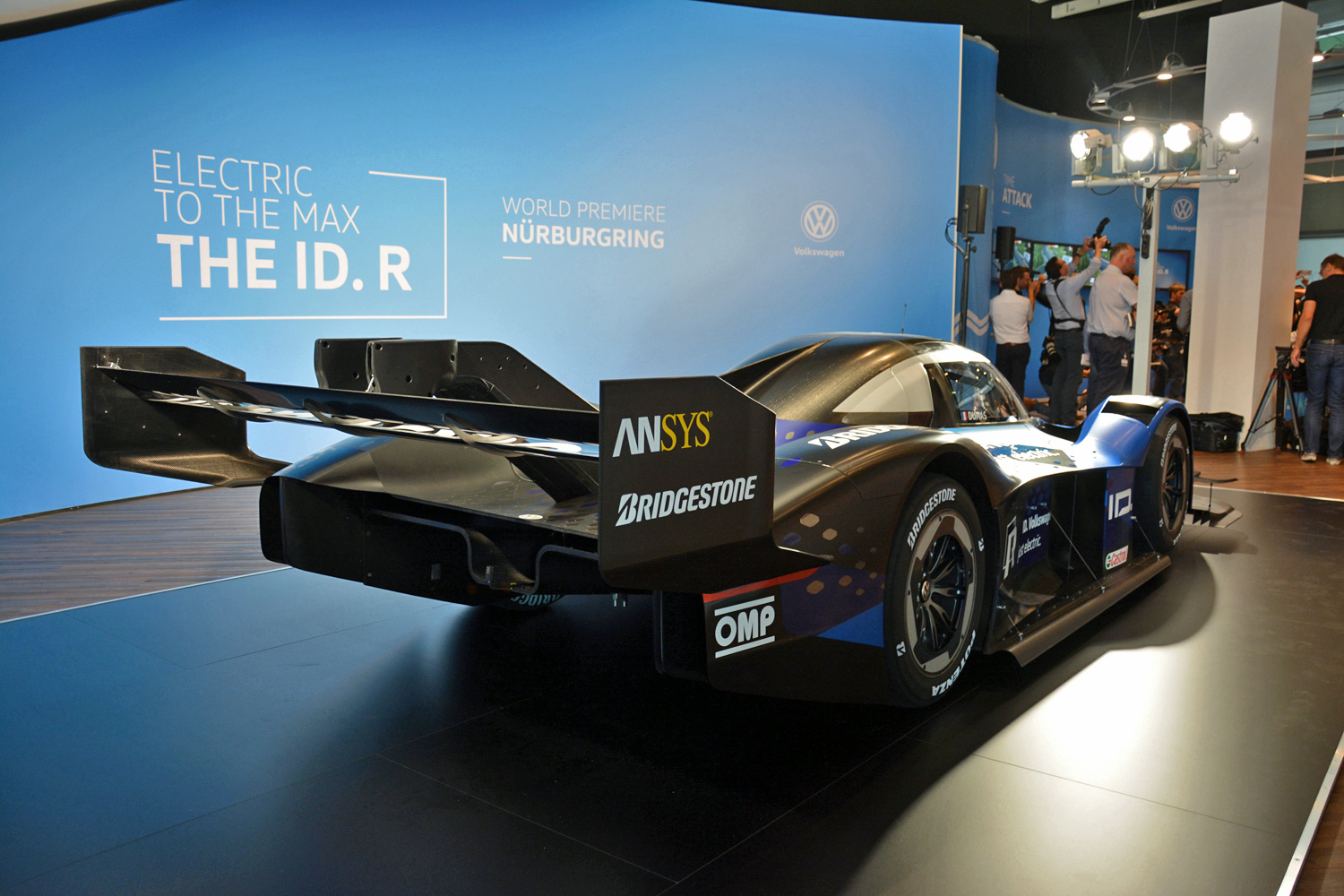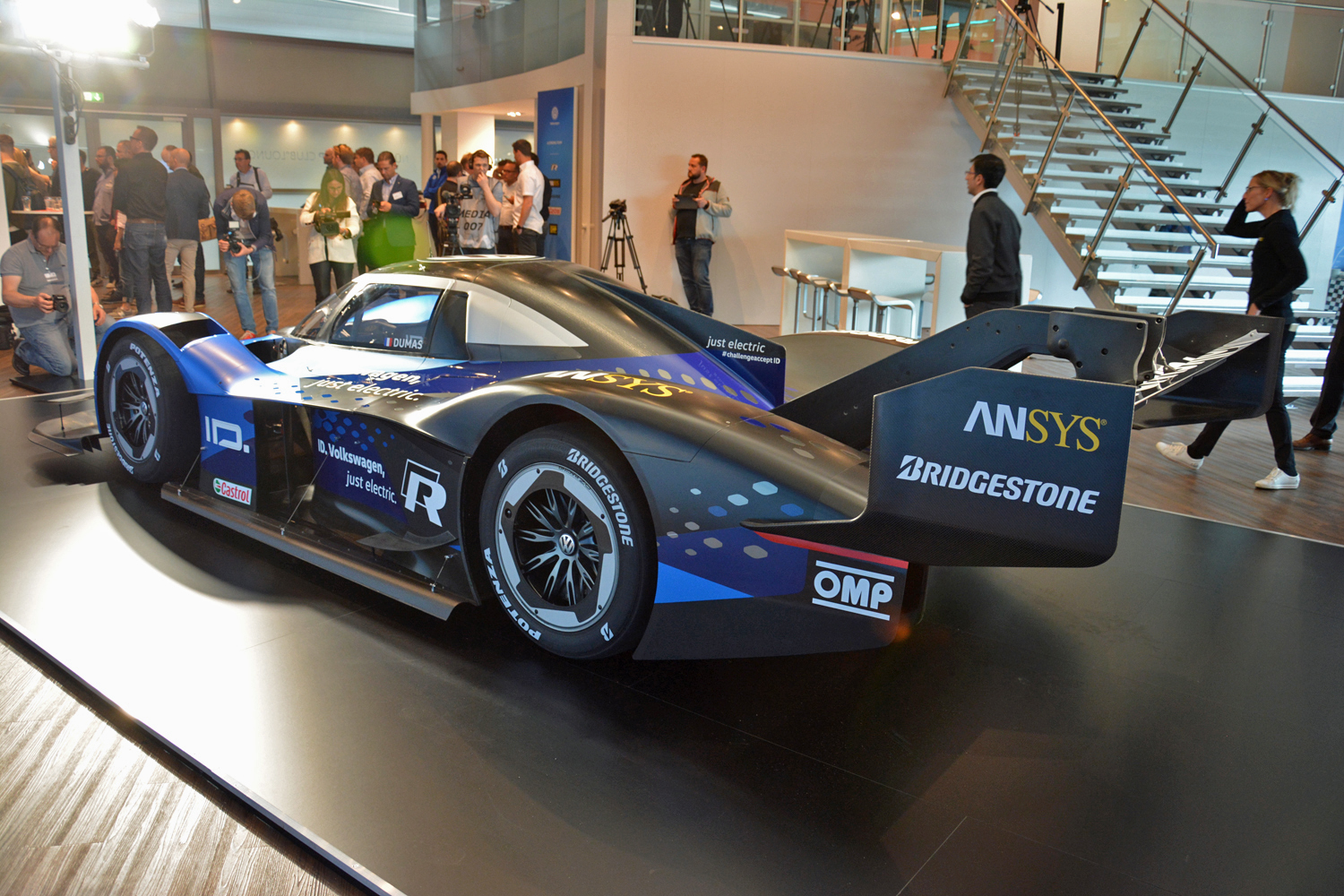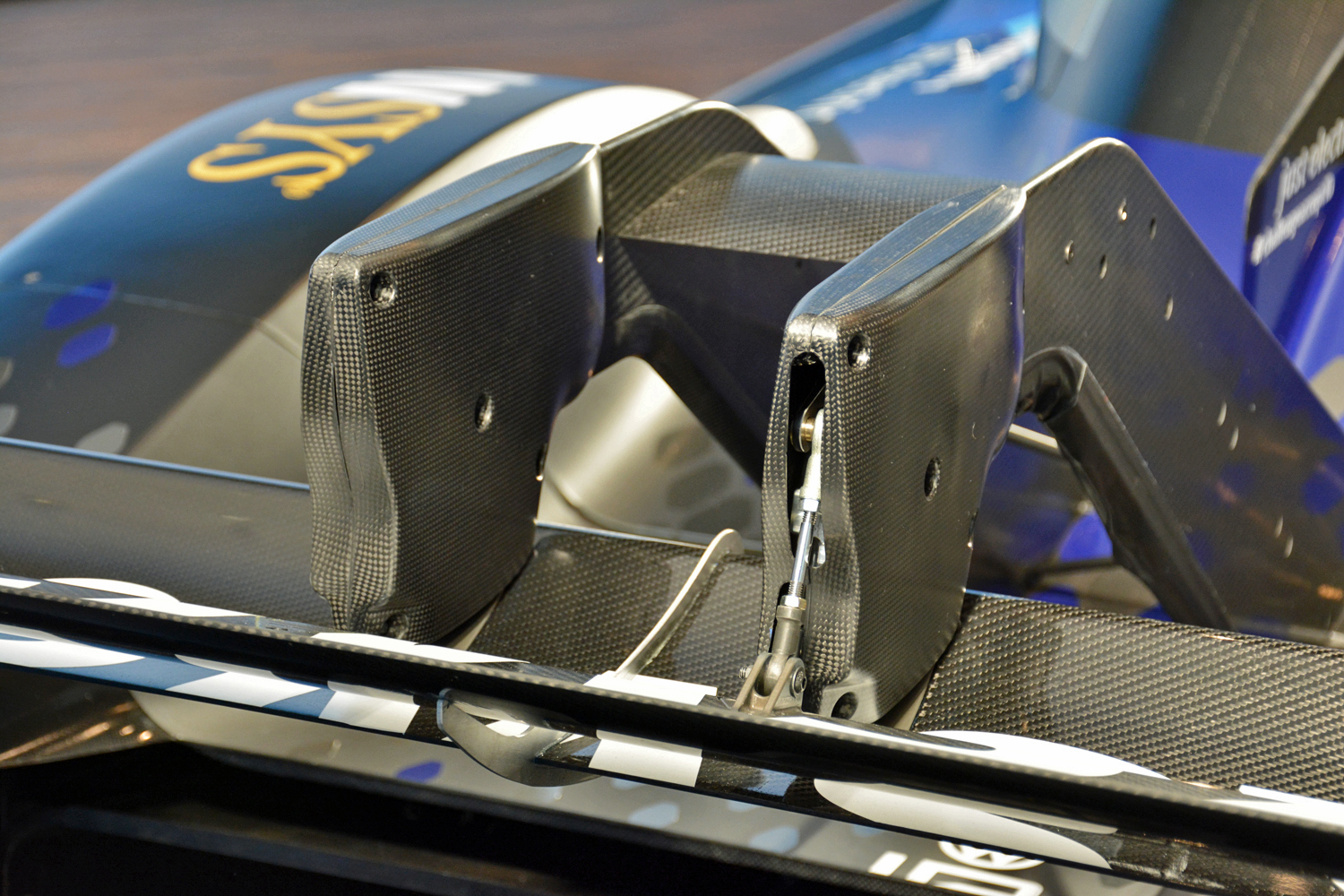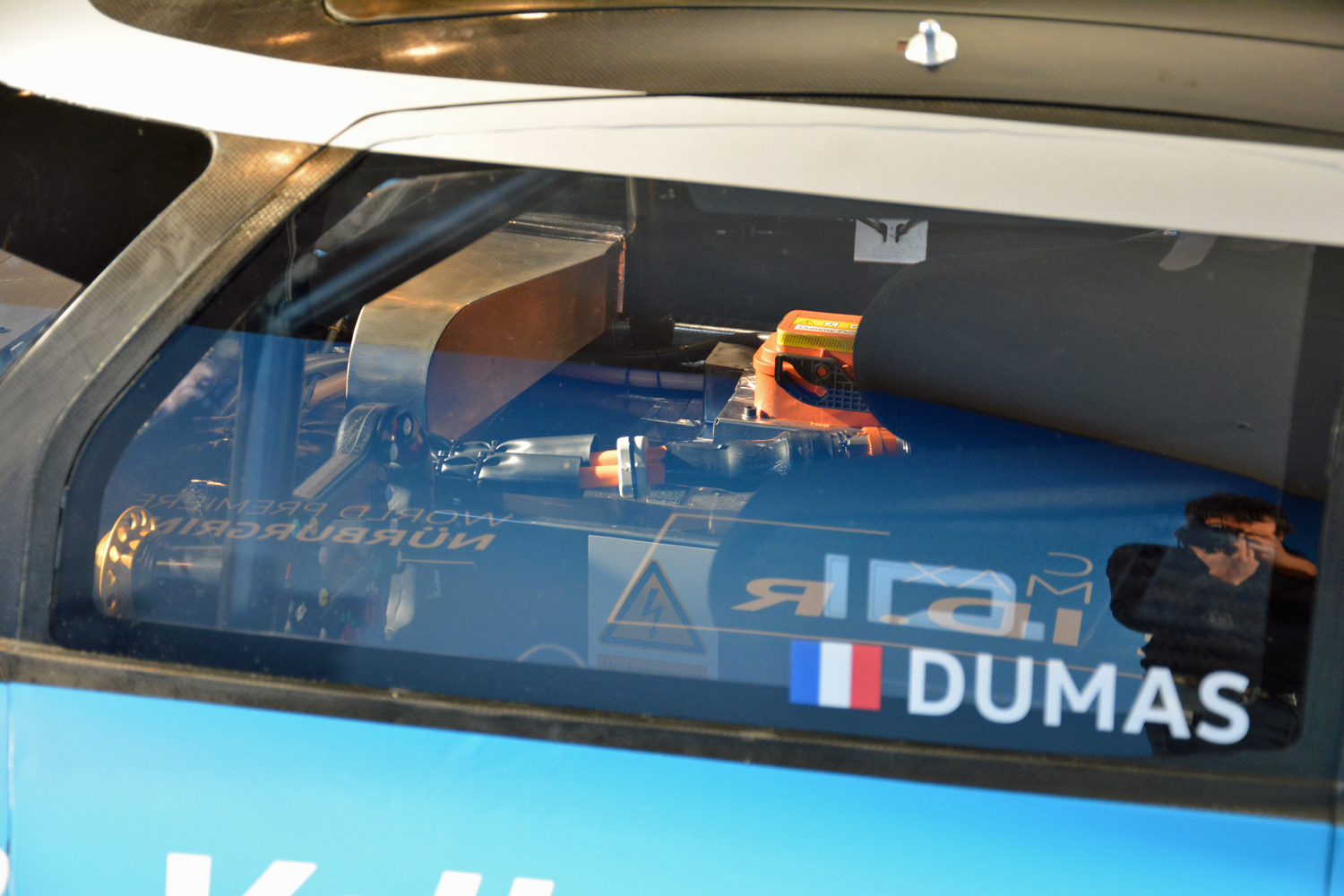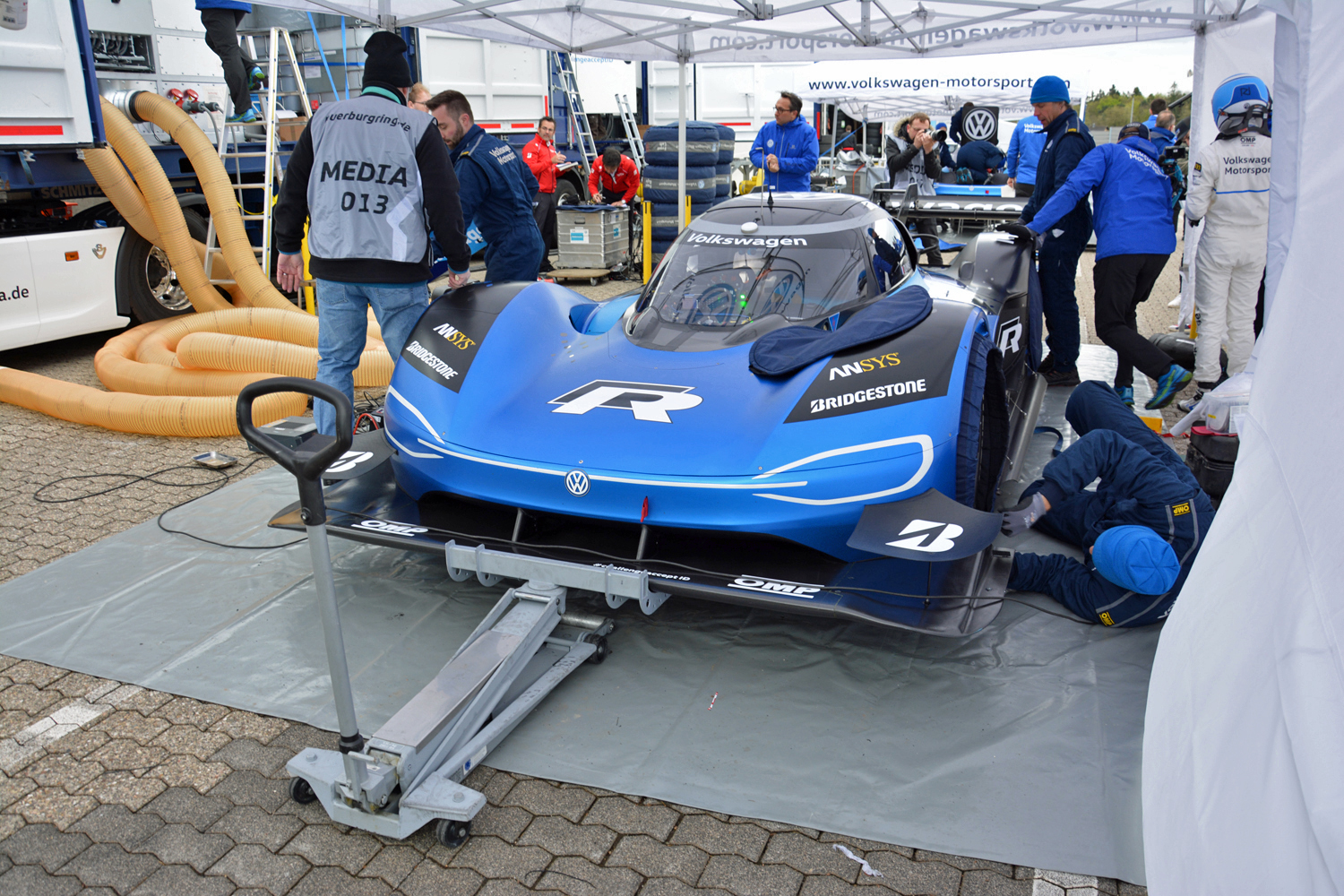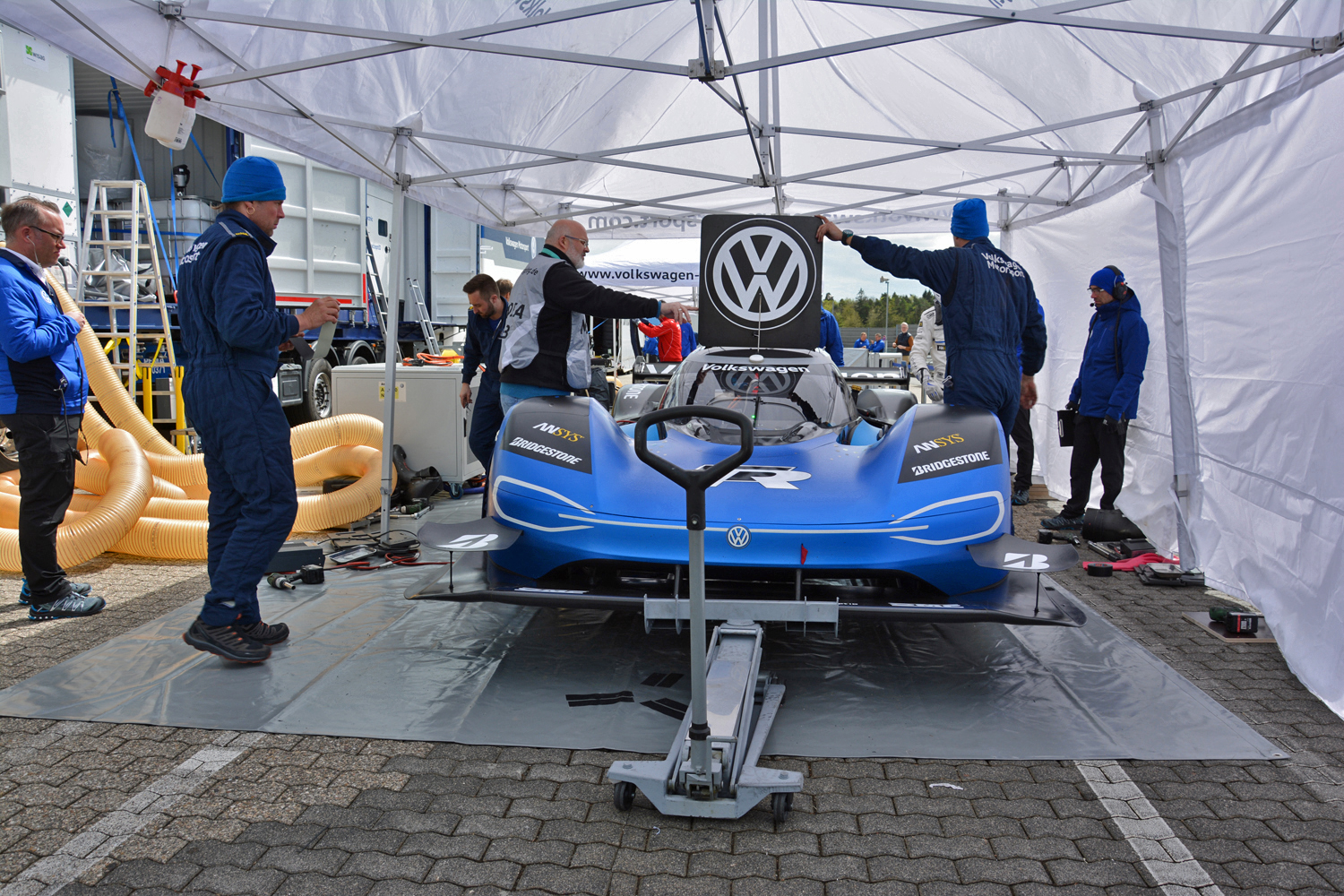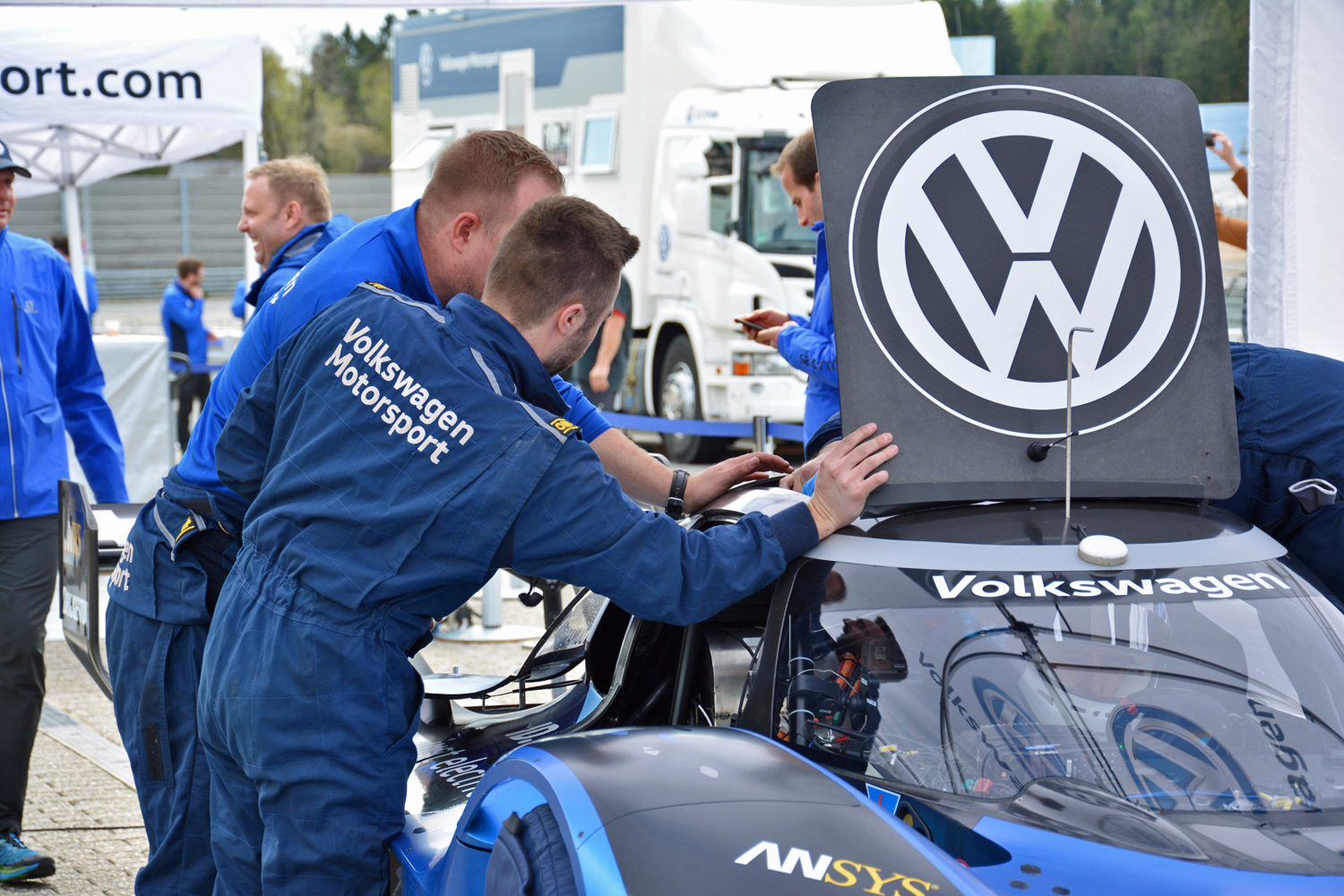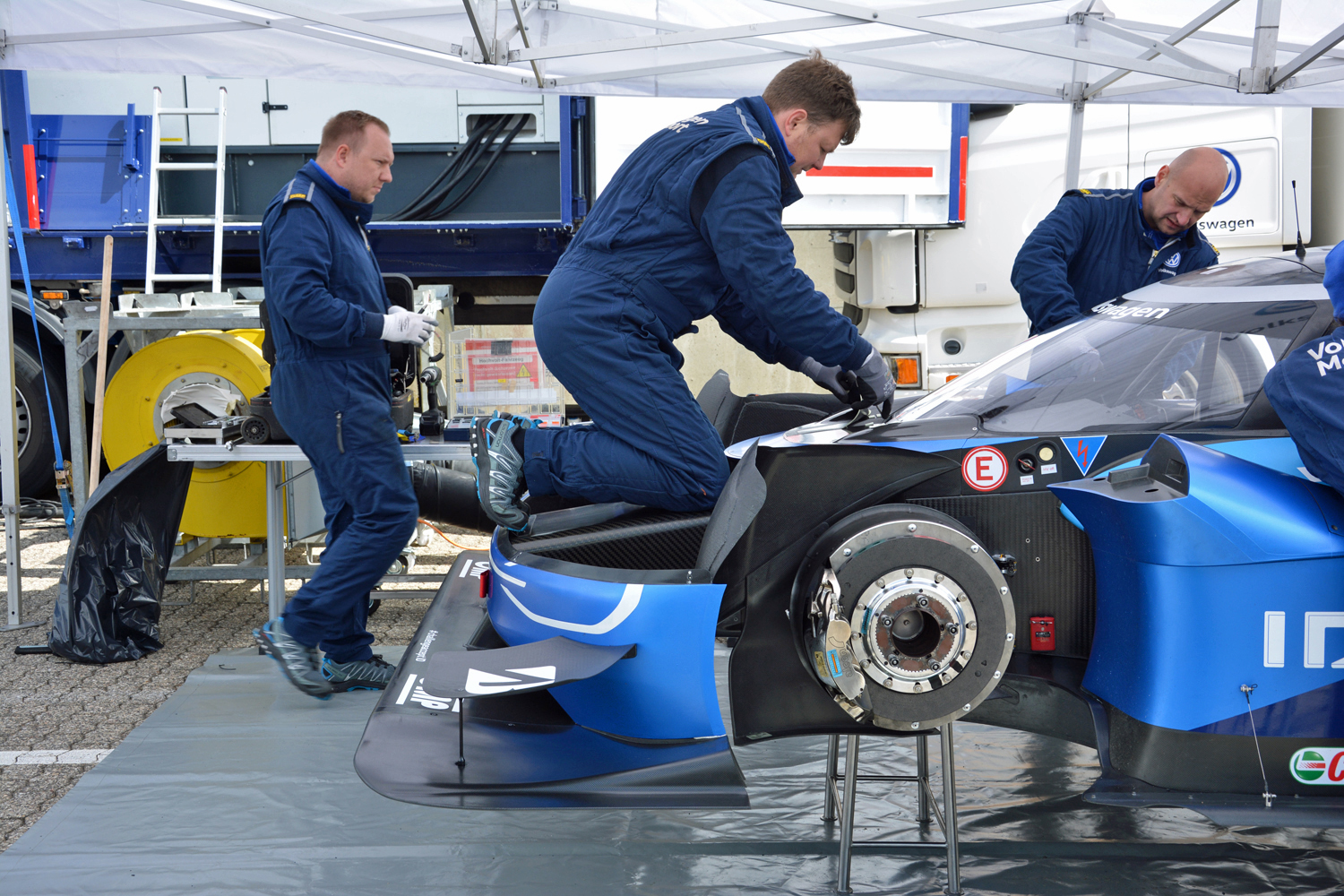The Volkswagen ID R electric race car shocked the world when it set the overall record at the Pikes Peak International Hill Climb held in Colorado. Now, the German firm is aiming for an even bigger target. It took the ID R to the 12.9-mile long Nürburgring Nordschleife in the heart of Germany in a bid to break the lap record for electric cars while Digital Trends stood in the pit lane to watch the preparations and talk to some of the engineers working tirelessly to make racing history.
Winning at the track commonly called the Green Hell conveys ultimate bragging rights. “That’s why we chose the ‘Ring — it’s the most difficult track,” Sven Smeets, the director of Volkswagen Motorsports, told Digital Trends. “If you can win here, you don’t need to win anywhere else,” he added.
The ID R was built specifically to break the electric car record at Pikes Peak, so Volkswagen couldn’t simply send it to Germany and ask French pilot Romain Dumas to drive it flat-out. “It’s about [15 miles] long, so you’d think it’s a lot like Pikes Peak, but it’s not,” said François-Xavier Demaison, Volkswagen Motorsport’s technical director, before unveiling the new version of the R in front of members of the media.
His team of engineers faced several technical challenges during the transformation process. The bench-sized rear wing used at Pikes Peak made sense in the thin air on the mountain, as it generated the maximum amount of downforce to keep the car stuck to the road. But on the Nürburgring, that wing would create too much drag, which would slow the car down. Engineers consequently redesigned the car’s aerodynamic profile. The rear wing is notably smaller, and it’s positioned closer to the air diffuser.
The lessons learned from the ID R project will help Volkswagen design production cars in the coming years.
There’s more than meets the eye. “The secret of the car’s aerodynamic efficiency is under it,” affirmed Willy Rampf, one of the project’s technical advisers. He stopped short of providing additional details; some parts of the R need to remain under wraps. The firm also made modifications to the powertrain to help the ID R achieve jaw-dropping speeds — up to 168 mph — on the straight parts of the track. None of the R’s technology is production-bound, but the lessons learned from the project will help Volkswagen design electric cars in the coming years.
“It’s the ambassador for the ID family. It’s the bigger brother for small brothers still to come,” Rampf hinted with a smile. The knowledge gained in the field of battery management is particularly valuable, Smeets told us.
The ID R still uses two electric motors — one powering each axle — which produce a combined 680 horsepower and 479 pound-feet of torque. The electric powertrain gave it an advantage at Pikes Peak, where the altitude robs oxygen — and thus power — from internal combustion engines. Volkswagen won’t have that advantage at the Nürburgring. The ID R may even be at a disadvantage because of its heavy battery pack. It weighs 2,400 pounds, compared to the 1,871-pound weight of the Porsche 919 Evo that holds the record. At least Volkswagen is sticking with Dumas, who set the Pikes Peak record. As a four-time winner of the Nürburgring 24-hour race, he’s familiar with the track.
In preparation for the record attempt, Volkswagen tested the ID R on several race tracks around the world, and it built a simulator to get a better idea of how it will handle the ‘Ring. Setting it up without actually testing it on the track it needs to conquer was made possible by a tremendous amount of data, massive computing power, and human input.
“The car has about 1,000 sensors that transmit passive data. We also used feedback from Romain’s butt, brain, and hands to achieve the best setup possible,” explained Demaison. Testing on the ‘Ring started on April 25, 2019, and Smeets told Digital Trends that everything is going relatively well. The team identified the areas it needs to improve over the coming months; the official record attempt will take place in the summer. This time frame gives the team the time it needs to prepare, and it gives Germany’s weather a chance to clear up.
Smeets didn’t reveal how fast the ID R went around the track during its first tests, but we saw it in person, and it’s incredibly quick. It’s not as silent as you might imagine, either. While it doesn’t scream like a twin-turbocharged V8, we heard the spaceship-like whir of the electric motors at least 10 seconds before the car sped past us.
Nio holds the current electric car record. The Chinese startup’s EP9 recorded a 6-minute, 45.9-second time in 2017. The EP9 is technically a road car, but Nio only made 16 of them — priced at $1.4 million each. Volkswagen’s internal simulations indicate that the ID R will be much quicker than the EP9. We’ll find out how much faster next week in May.
In the meantime, Volkswagen is giving speed junkies a chance to break the record before Dumas takes the wheel. It teamed up with RaceRoom to develop a realistic racing simulator that can be downloaded for free online. It’s best enjoyed when using a gaming steering wheel and pedals, as we found out during the car’s unveiling, and it’s even compatible with virtual reality goggles.
Updated on April 26, 2019: Added details about the car and the record attempt.
